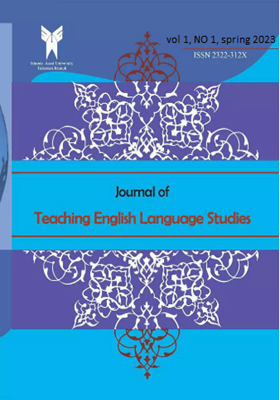-
-
List of Articles
-
Open Access Article
1 - Collaborative and Team Teaching in ESP Contexts
Simindokht Vakilidousta Ramin Rahmani -
Open Access Article
2 - A Study of Strategies Used in Translating Idiomatic Expressions In Serial Subtitles from English to Farsi
Sahar Hasani Moghadam -
Open Access Article
3 - Trajectory of L2 Motivation Theories Development: Transition from the Social Psychological Views to the Socio-dynamic Perspectives
Saeed Safdari -
Open Access Article
4 - Elicitative Psycholinguistic Tasks for EFL/ESL Research: A Literature Review
Sedigheh Golmohammadi -
Open Access Article
5 - The Effect of Verbalization on Young Learners’ Speaking Performance: Collective versus Idiosyncratic Changes
Somayeh Akbari Parisa Daftarifard -
Open Access Article
6 - The Need to Develop Authentic Materials in Teaching Grammar Argumentatively and Communicatively for Iranian High School Students: (Theoretical perspectives)
Aliakbar Tajik Neda Hedayat Neda Gharagozloo -
Open Access Article
7 - Impact of Neuro-linguistic Programming (NLP) on EFL Learners' Writing Achievement and Critical Thinking
Hadi Salehi Sara Karimi
-
The rights to this website are owned by the Raimag Press Management System.
Copyright © 2021-2025







